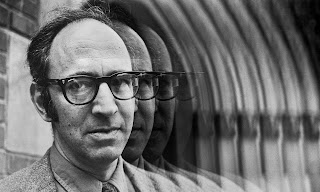1. Definition and explanation of what is a Paradigm and how it is created and developed.
A paradigm can be defined as a theory or assumption about a certain topic, which has often been used in a multicultural context to describe the preconceived ideas we have about some groups or a relevant topic. It is mostly bound to a historical or cultural context which determines the way we conceive things.
It all starts with an idea about a problem or relevant theme which is developed to find a solution, creating at the same time new paradigms. Kuhn described this process as an opportunity to explore the research of different ideas or interpretation of the same phenomena.
To explain this topic, it is important to have an example. We have an idea such as “Gay couples shouldn’t adopt babies”, this very polemic idea is the first paradigm because many people believe so. Which is followed by a reaction, maybe to be against this idea there’s a protest march to support gay couples who wish to adopt babies but at the same time there are some of them who agree with the paradigm. This starts a crisis about who is right or who is wrong. There is also a turning point where we are able to change some people's mind but not everyone, so they will start creating new paradigms.
The paradigms develop through social interaction. Unfortunately, sometimes we normalize ideas that sometimes end up hurting others, and those are the main concerns when it comes to finding new solutions.
2. What is the Structure of Scientific Revolutions of Thomas Kuhn and how the social revolutions may fit in this system, provide explanations and examples.
He takes into account three main points, the paradigm, which is the set of ideas that are considered universal. The methodological processes that come with the creation of these ideas and the cultural concepts that are related to the context and the community where they are created.
An idea is put on the table, this causes a reaction (an anomaly) therefore we start a crisis (what is the truth and what is a lie?). Then we have a revolutionary science which helps to find solutions in order to create a new paradigm which becomes a normalized science.
The Structure of the Scientific Revolution of Thomas Kuhn is very complex because it not only exposes the main points to develop the idea, but it also opens the possibility of creating even more paradigms. Paradigms become something that we get accustomed to because we normalize these ideas, all this due to the fact that maybe this idea is a common belief.
Anomalies
1 PARADIGM ------------------------------------------CRISIS-------------------------------------------- 2 PARADIGM
(Normal Science) Revolutionary Science (Normal science)
A clear example can be feminism in Mexico, the paradigm was that women were not treated equally generally speaking. The increase of cases of women murdered by men impacted significantly on topics such as safety, in how protected are women in our country by the justice system. This is the anomaly, women started protesting against the social justice system because there has been an increase in cases, but it seems as if they were avoiding talking about this issue. The crisis started when people started questioning the ways women protested because they thought it was very destructive and rude, but at the end. Many changed their minds because we realized that protesting caught the attention of the authorities, who helped with some laws that protected women in some areas. Even though they created these laws, there were many areas that needed protection, which started with new paradigms.
Another example is the fact that African Americans were not allowed to go to some stores. As an anomaly, we can consider the start of the civil rights movement by Dr. Martin Luther King, who gave African Americans hope and inspired others to fight (non-violently) to be treated equally. The crisis in this case is the fact that people started questioning why they treated black people the way they did, this helped to find solutions for those who were in need. They changed their ways and started to allow them to go to more places, but it didn't completely change the situation as we can see nowadays creating even more paradigms about the same topic.
3. I would be thankful to read your feedback about the spiral structure of knowledge/skills acquisition.
The Spiral structure or the Mondragon Spiral is a very interesting view of how to overcome some typical problems in different areas when we want to expand our set of skills. The idea of the event is something that I haven't considered before as a motivation booster, at least not as something you can apply in a classroom. It is inspired by the previous structure, but the idea of having a record is very much needed to exceed our expectations and be able to create new solutions to our concerns. I didn't know about this structure:
Unconscious competent
Consciously competent
Consciously incompetent
Unconsciously incompetent
This is required to develop skills to our full potential, which means that thanks to the spiral, we can achieve it. I'm also interested in seeing the three-dimensional spiral model. Because I think adding some new aspects will help them to have a complete idea about how we can be able to be unconsciously competent and develop more skills that will help with our daily life.



